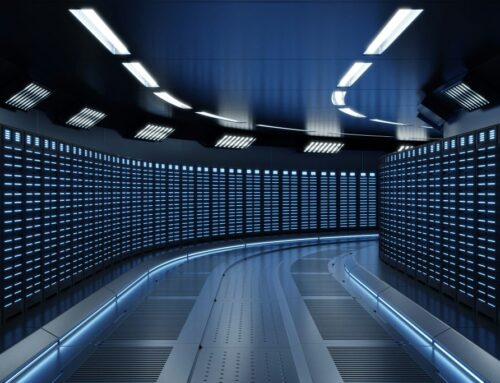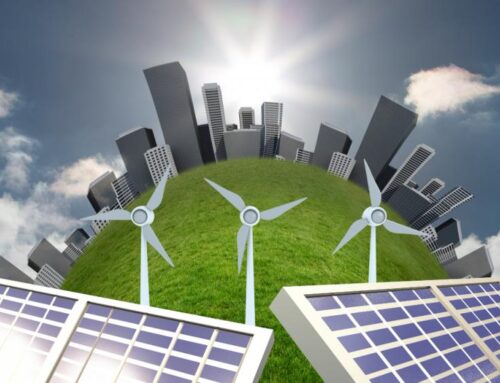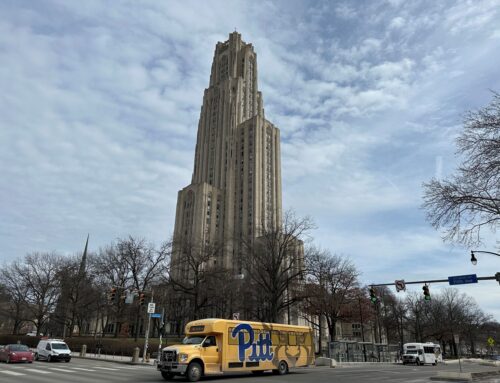Evolving Green Data Centers: A Sustainable Future
October 6, 2025
Green data centers are rapidly evolving into sustainable, energy-optimized infrastructure solutions, driven by the growing demand for low-carbon operations and high-efficiency power and cooling According to MarketsandMarkets The global green data center market is expanding rapidly, with a projected market size anticipated to rise from about USD 48.26 billion in 2025 to USD 155.75 billion by 2030, featuring a CAGR of 26.4%.
The market is driven by the increasing demand for energy-efficient infrastructure to support high-density workloads, where minimizing power consumption and emissions is critical for sustainability. Enterprises are also seeking advanced cooling solutions and intelligent energy management systems to optimize operational efficiency and align with corporate net-zero goals, along with the growing adoption of renewable energy sources to power resource-intensive applications such as AI, cloud computing, and data analytics. Furthermore, the need for reliable, low-carbon power and scalable modular designs is becoming essential to meet expanding digital workloads, while automated monitoring and carbon reporting capabilities enable compliance with tightening global regulations.
In contrast, the market faces restraints, including significant upfront capital expenditure for renewable integration and advanced cooling technologies, and operational complexity in retrofitting existing facilities, which can slow adoption among budget-conscious or legacy-focused organizations. Cloud & hyperscale data centers are at the forefront of the green data center market, driving the adoption of renewable energy, advanced cooling technologies, and energy-efficient infrastructure to support large-scale cloud platforms, AI workloads, and global applications.
These facilities are designed to deliver high-performance computing at scale while minimizing environmental impact, making sustainability a central component of operational strategy. Strategic partnerships are playing a key role in accelerating this transformation and creating opportunities for emerging vendors and solution providers to contribute innovative, energy-efficient solutions.
In November 2024, Schneider Electric and Vertiv, in collaboration with major tech companies such as Google and Microsoft, launched a Request for Information in Europe to replace diesel backup generators with cleaner alternatives, demonstrating the industry’s commitment to reducing carbon emissions and embracing low-carbon operations. Similarly, in 2023, Huawei partnered with Qinghai Yungu Big Data Industry Development Co., Ltd. to develop a 100% clean energy data center in Hainan Prefecture, Qinghai, revealing the potential of modular designs to deliver reliability, flexibility, and high energy efficiency. These collaborations highlight how integrated, scalable, and sustainable infrastructure can meet performance demands while reducing environmental impact. For emerging vendors and solution providers, engaging in such initiatives allows them to offer innovative technologies, enhance their market presence, and contribute significantly to the green transformation of cloud and hyperscale data centers. Data center infrastructure management (DCIM) is the most critical software segment in green data centers, expected to hold the largest market share during the forecast period, as it enables comprehensive monitoring, control, and optimization of IT and facility resources to maximize sustainability and reduce energy consumption. DCIM provides continuous power and environment monitoring, tracking metrics such as power usage, voltage, temperature, humidity, and airflow across the facility, allowing operators to identify hotspots, detect anomalies, and prevent energy waste while ensuring reliable operations.
The software’s energy optimization tools analyze consumption patterns to suggest or automate adjustments in cooling, lighting, and IT workloads, reducing carbon footprint without compromising performance. Capacity planning within DCIM enables precise forecasting of power, cooling, and space requirements, ensuring efficient resource allocation and minimizing over-provisioning. Asset lifecycle management tracks IT and infrastructure components from procurement to retirement, supporting optimal utilization, redundancy reduction, and sustainable procurement practices.
Alerting and incident management features provide real-time notifications for potential failures, threshold breaches, or inefficiencies, allowing rapid corrective action to minimize downtime and energy loss. Emerging vendors can capitalize on this growth. For instance, in June 2025, Schneider Electric partnered with NTT Data to deploy its EcoStruxure IT DCIM platform across multiple European data centers, enhancing operational efficiency and energy savings.
By integrating analytics, automation, and monitoring, vendors can deliver energy-efficient, sustainable, and regulatory-compliant data center operations. North America is expected to dominate the green data center market, driven by rising enterprise demand for energy-efficient infrastructure, renewable-powered facilities, and compliance with stringent sustainability regulations. This presents significant opportunities to deliver scalable platforms that support industries such as hyperscale cloud, financial services, AI-driven analytics, and healthcare for solution providers and vendors. The region’s mature data center ecosystem and rapid adoption of net-zero initiatives accelerate the transition from traditional power-intensive facilities to low-emission, modular, and high-density designs, creating strong demand for sustainable, regulation-compliant infrastructure.
Strategic collaborations, including partnerships with renewable energy suppliers and technology vendors, demonstrate how green data centers enhance operational efficiency and reduce carbon footprints. Capitalizing on these developments enables providers to meet evolving enterprise sustainability goals, address energy and regulatory challenges, and establish resilient market positions in an industry increasingly defined by environmental responsibility and technological innovation.
Search
RECENT PRESS RELEASES
Related Post



